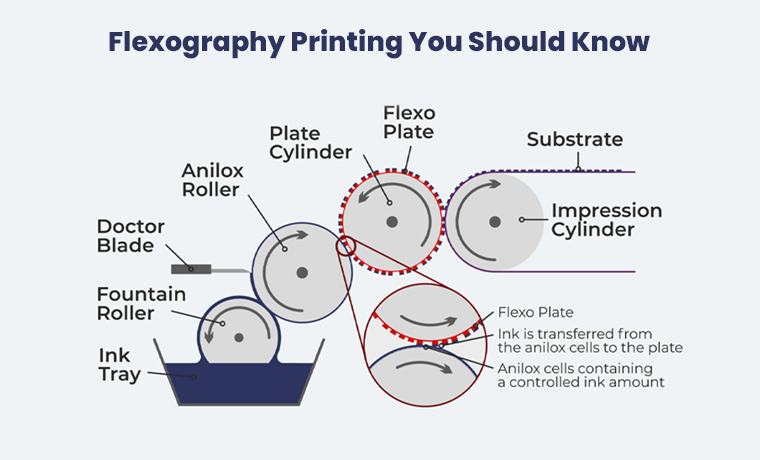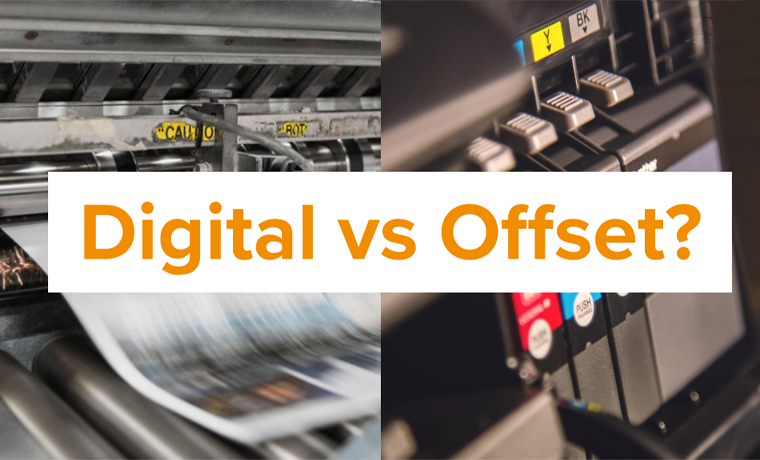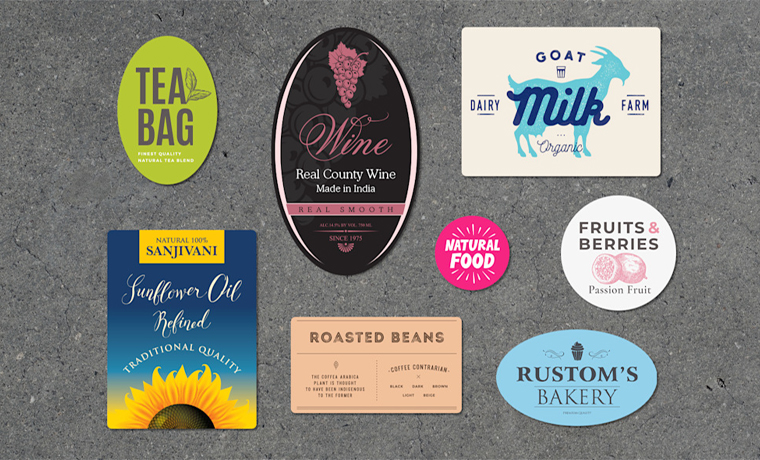12 Environmentally-Friendly Packaging Material Solutions You Should Know To Reduce Waste

Non-recyclable packaging waste has a long history of usage and has been a giant problem in our environment for a long time. No matter what industry you are associated with, if the packaging is wasteful, it is a hazard to our environment. According to WRAP (Waste and Resources Action Programme - A climate action NGO), the world produces 141 million tonnes of plastic packaging yearly. Tonns of plastic and modeled foam come to a halt in land waste, and staying there for longer can cause massive harm to our environment.
During the pandemic, when shopping shifted toward the e-commerce industry, many orders were placed online that offered convenience. But this convenience increased landfills and brought a huge plastic packaging impact on our environment. However, this influence increased packaging waste and encouraged many businesses to skip materials and switch to a green approach.
Considering sustainable product packaging, many businesses stepped toward sustainable and environmentally friendly packaging material to show their sustainability responsibilities and contribution to saving the planet. Whether you are an e-commerce or traditional business owner and want a greener future, don’t go anywhere.
In this guide, we will explore various eco-friendly packaging materials, their usages, and benefits to help you decide which material you should use for your business and greener future.
1. Kraft
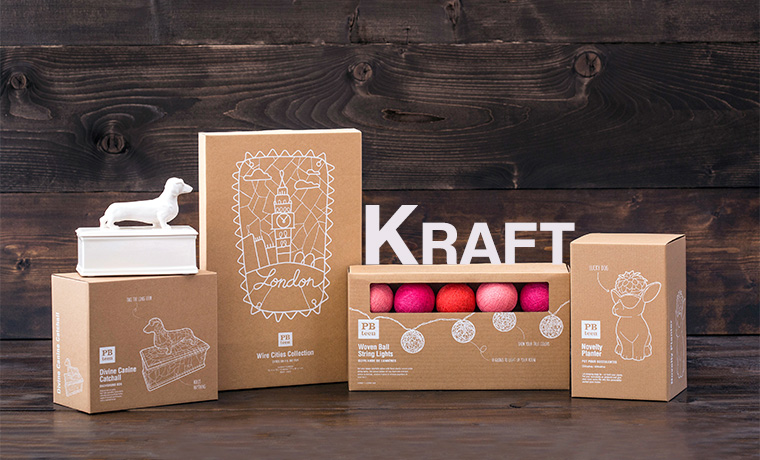
Recyclable Kraft paper originated from fresh wood pulp. It is a naturally brown paper known for its durability, strength, and versatility. This Kraft paper packaging material is better than other paper or plastic materials as it does not lose its durability and recyclability, even if reused multiple times. Its recyclability has made it ideal as it reduces waste and does not harm the environment. Wrapping papers and paper bags can be made with the help of this material to accommodate various products.
2. Compostable
Compostable packaging is an environmentally friendly choice. This material is made from natural resources like cornstarch, sugarcane, or mushroom fibers and is designed to break down into natural elements. It leaves no harmful residues and reduces waste. Since it is made from natural resources, it is not toxic to the environment.
3. Molded Pulp
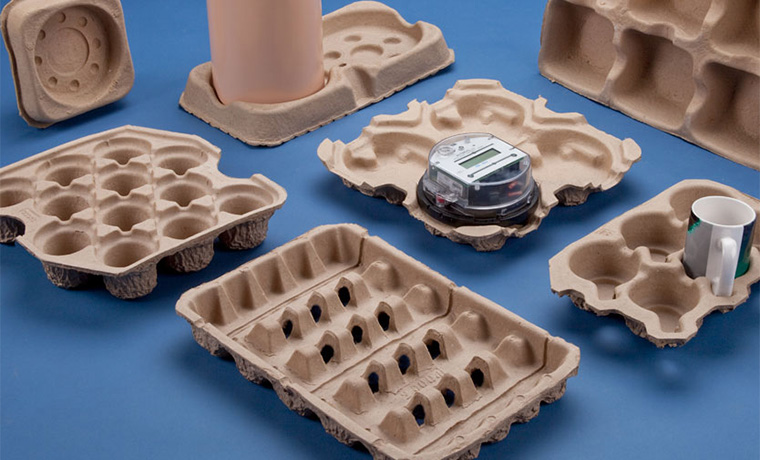 The Molded pulp, also known as model fiber, is another sustainable choice. It is produced from recycled paper or cardboard fibers. Its process involves turning these fibers into a slurry when this raw material is shredded and mixed with water, which is then molded into various shapes and dried. Due to its strength and shock-absorbing properties, it is good to use in packaging and trays.
The Molded pulp, also known as model fiber, is another sustainable choice. It is produced from recycled paper or cardboard fibers. Its process involves turning these fibers into a slurry when this raw material is shredded and mixed with water, which is then molded into various shapes and dried. Due to its strength and shock-absorbing properties, it is good to use in packaging and trays.
4. Recycled
Recycled packaging is another form of environmentally friendly material created from materials that have been in use before. Through a process, it transforms used packaging material into a new form.
This sustainable material consists of glass, plastic, metal, paper, and cardboard and is an alternative to packaging made from natural resources. It is a less expensive material than others, reduces waste, and lowers energy consumption.
5. Corrugated
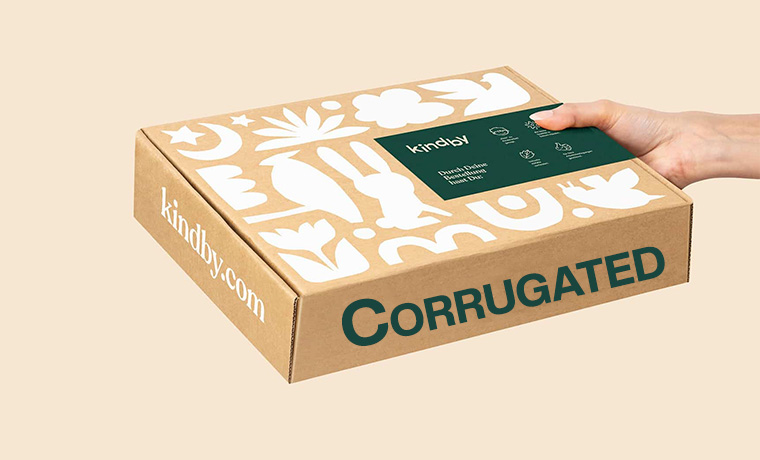
Corrugated material is an eco-friendly choice for e-commerce shipping, retail, and food packaging. It is made of three or five layers of paper. Two or three outside flat sheets of paper are liners glued with one or two fluted (wavy) liners.
They provide cushioning and strength. Its wavy pattern offers a strong structure to store and protect valuable items during transit. This packaging material offers intense protection in handling and shipping delicate or heavy-duty items.
6. Glassine
Glassine is a transparent, smooth, and glassy paper made packaging material. It is made from wood pulp, which makes it recyclable. Also, it provides a luxurious look and can be used for wrapping luxury candles.
This environmentally friendly packaging protects products from moisture, air, and grease. Its translucent feature allows customers to see through the product inside. It is excellent for packing food, cosmetics, and stationery items.
7. Bioplastics
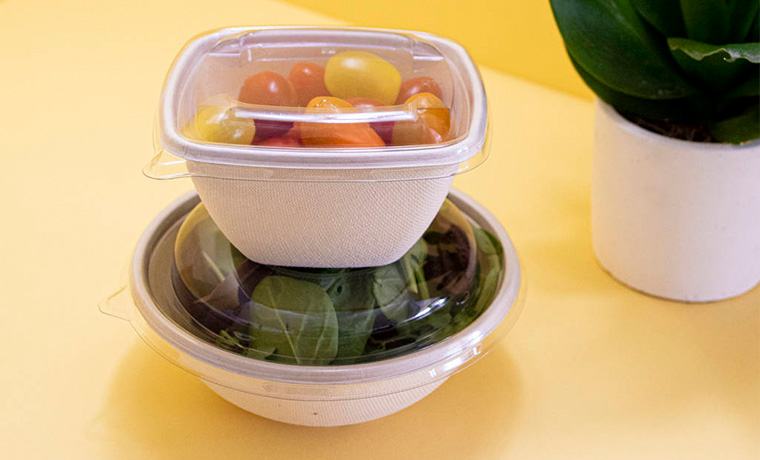
Bioplastics are plastic materials produced from renewable biomass sources like corn starch, potato starch, and recycled food waste. They reduce pollution when decomposed and are suitable for the food industry because you can easily break it down after use.
8. Mushrooms
Mushroom is a lightweight yet biodegradable packaging material made from fungus roots called mycelium. Its durability and strength allow it to be shaped into various forms. This sustainable material provides superior thermal insulation properties, which is why it is ideal for temperature-sensitive items and protects products during shipping.
9. Cornstarch
Cornstarch is an eco-friendly material made from biodegradable polylactic. This material reduces reliance on fossil fuels and lowers carbon footprint. If you need safe food packaging material, prefer this. It is expensive but protects food from moisture, oxygen, and heat.
10. Bamboo
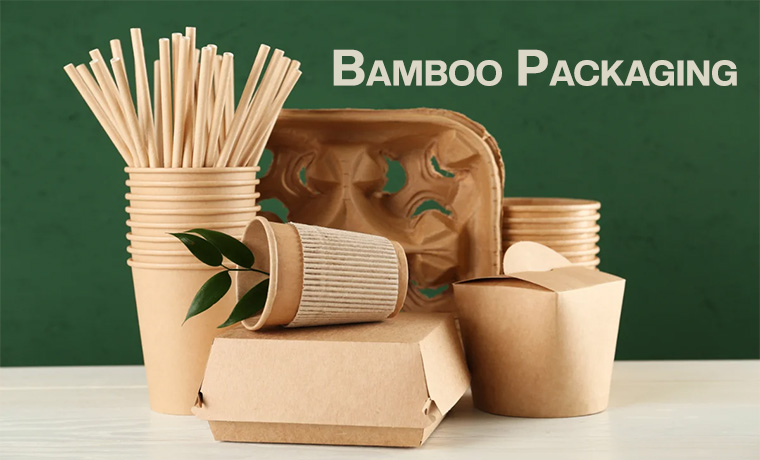
Bamboo packaging material is environmentally friendly and made from bamboo plants. This compostable material is suitable for preserving various food items, such as fruits, vegetables, snacks, and bakery items.
11. Cellulose
Cellulose is a biodegradable material made from organic resources, which makes it an excellent alternative to plastics. Its oxygen, UV light, and moisture-resistant properties protect products from external elements. Thanks to its eco-friendly nature, it is ideal for food preservation to maintain its quality.
12. Seaweed
Seaweed packaging material is appearing as a groundbreaking eco-friendly packaging solution. It is made from renewable and abundant resources and is an alternative to plastic packaging material.
Do you know how seaweed is formed? It is processed from algae and possesses unique properties that make it suitable for packaging. Readily breaking down in a natural environment, this seaweed packaging leaves minimal environmental impact. It can be created in different shapes, and containers made from seaweed for food are one of the examples.
Which Material Is More Environmentally Friendly
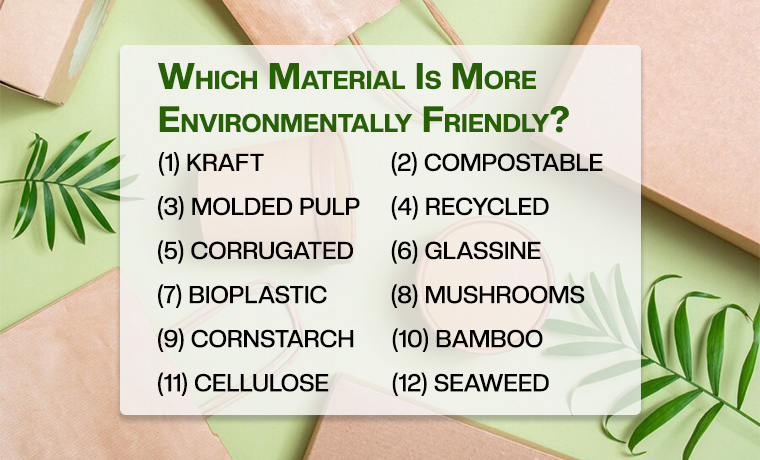 It is difficult to determine which eco-friendly material is a far better option. The environmental impact depends upon the material from which it is produced. We have explained various environmentally friendly packaging materials above. From styrofoam-like material bamboo to glass and bioplastics, we have pictured green packaging solutions. Discover your business needs and choose a material that is a good fit.
It is difficult to determine which eco-friendly material is a far better option. The environmental impact depends upon the material from which it is produced. We have explained various environmentally friendly packaging materials above. From styrofoam-like material bamboo to glass and bioplastics, we have pictured green packaging solutions. Discover your business needs and choose a material that is a good fit.
Conclusion
To sum up, these nature-friendly packaging materials are essential for every business. With eco-friendly practices, you can meet growing demands for sustainable packaging materials and preserve a sustainable tomorrow. By choosing biodegradable, reusable, and recyclable packaging material carrying sustainable printing options, you are playing your part in reducing waste and marking your brand to entice eco-consciousness.
After reading this guide, we hope you will have a better understanding of environmentally friendly packaging materials. Now, you can opt for the right green packaging material to meet your business needs. Ready to shift over to eco-friendly practices, Custom Product Packaging can help. Give us a quick call or email us at orders@customproductpackaging.com. We leave no stone unturned to serve our clients.


